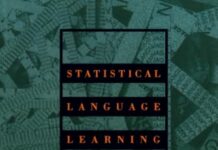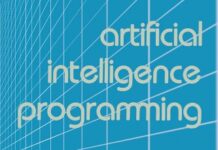
Ebook Info
- Published: 2019
- Number of pages:
- Format: PDF
- File Size: 16.33 MB
- Authors: Eugene Charniak
Description
A project-based guide to the basics of deep learning.This concise, project-driven guide to deep learning takes readers through a series of program-writing tasks that introduce them to the use of deep learning in such areas of artificial intelligence as computer vision, natural-language processing, and reinforcement learning. The author, a longtime artificial intelligence researcher specializing in natural-language processing, covers feed-forward neural nets, convolutional neural nets, word embeddings, recurrent neural nets, sequence-to-sequence learning, deep reinforcement learning, unsupervised models, and other fundamental concepts and techniques. Students and practitioners learn the basics of deep learning by working through programs in Tensorflow, an open-source machine learning framework. “I find I learn computer science material best by sitting down and writing programs,” the author writes, and the book reflects this approach.Each chapter includes a programming project, exercises, and references for further reading. An early chapter is devoted to Tensorflow and its interface with Python, the widely used programming language. Familiarity with linear algebra, multivariate calculus, and probability and statistics is required, as is a rudimentary knowledge of programming in Python. The book can be used in both undergraduate and graduate courses; practitioners will find it an essential reference.
User’s Reviews
Reviews from Amazon users which were colected at the time this book was published on the website:
⭐this is a good (but hardly great) price for such a book. if you are familiar with Python, but not a professional programmer, not at all with other languages (particularly C/C++ for memory management), you are enthusiastic about creating neural nets yourself, but find the why and how of it all too boring, then this COULD be a good place to start. however, this book also isn’t quite clear enough as simply a list of instructions, to follow by rote.for some reason there did not seem to be a proof-reader? usually MIT Press is great about this. but besides the typos (forgivable), the grammar is convoluted. but far worse, the points of each paragraph are usually lost. it reads as if the original manuscript was twice as long and they just deleted every other sentence. one thought rarely connects to the next.it also appears the author does dutifully refer to other reading materials. these seem to have been assigned in some computer class, discussed, but the source material never really understood. i plodded ahead and read the whole thing, but sometimes someone goes on and on about a complex subject, and you realize this is so hard to understand because the person talking doesn’t actually understand it even worse. but the author must really, really want folks (strangers?) to be impressed.
⭐I highly recommend this text to anyone getting started with deep learning. It’s a much quicker read than the standard Goodfellow et al text, which was really the only option for quite some time. This book has enough detail to get you started, and lots of practical advice on building real neural networks. It’s a much more practical way to get started. If you read this and want more detail, you should move on to the Goodfellow book, but I think almost everyone should start here.
⭐I was wondering how the author could pack so much information in less than 200 pages on deep learning. Then after a few days reading, I got impressed that the contents were quite accessible and practical for programmers like me. Also, it helped me find missing parts that I didn’t know where to fit in when I was reading theory books. However, I encountered some typos here and there that disrupted the reading flow.
⭐In less than a week, the first page of chapter one came loose from the seam. Im expecting more to follow suit because of how thinly this page was set into the seam. The other pages are bound to be similar.
⭐Very good, I’m happy with it, have examined a lot of other titles, this one provides the missing ring between theory and implementation, even if you’re an expert, you’ll like it.
⭐Once the best books on deep learning I’ve read. This book is well written, concise, and clear. I learned a lot and appreciate the author’s efforts.
⭐Bought for my husband. He loves it
⭐There are DL books out there that are written by unprofessional writers that have better content than this book. Things that are written in the book are very elementary and can be found online.
⭐Beautiful book, full on very interesting pieces of information. It is anyway not an introduction to Deep Learning but an introduction to Tensorflow. Reader must know Deep Learning quite deeply already to full understand it.
⭐Das Buch ist sehr gut, aber leider war ein bisschen schmutzig.
⭐
Keywords
Free Download Introduction to Deep Learning in PDF format
Introduction to Deep Learning PDF Free Download
Download Introduction to Deep Learning 2019 PDF Free
Introduction to Deep Learning 2019 PDF Free Download
Download Introduction to Deep Learning PDF
Free Download Ebook Introduction to Deep Learning

